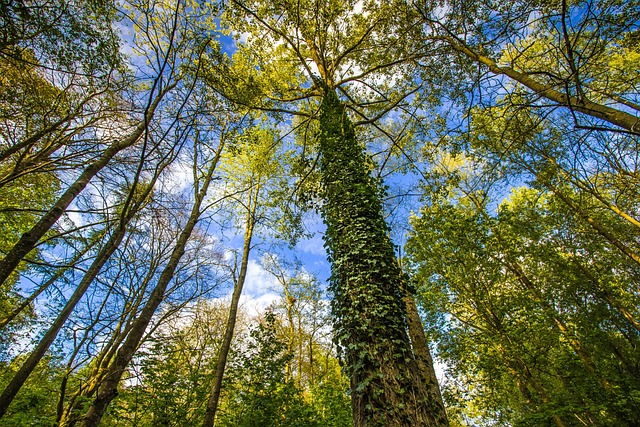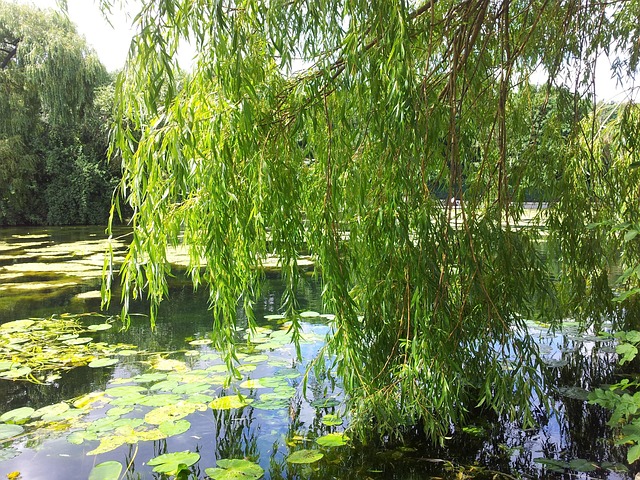Unwind and explore the great outdoors with a guided nature walk—an immersive experience for all ages. This article navigates scenic landscapes, from botanical gardens and family-friendly parks to tranquil nature reserves and thriving community gardens. Discover how to choose the perfect venue, engage young explorers, bring dogs along, and contribute to local sustainability efforts. Unleash your inner naturalist and explore these diverse destinations, each offering unique benefits and unforgettable experiences.
- Choosing the Right Venue: Exploring Botanical Gardens, Parks, and Nature Reserves
- – Benefits of each type of location
- – How to select an ideal spot for your nature walk
- Making it Family-Friendly: Tips for Engaging Young Explorers
Choosing the Right Venue: Exploring Botanical Gardens, Parks, and Nature Reserves

When planning a nature walk with informative guides, choosing the right venue is key to enhancing the experience. Botanical gardens offer a rich array of plants from around the world, providing an educational opportunity to learn about diverse flora. These gardens often have well-maintained trails and knowledgeable staff who can share insights into the species on display. Family-friendly parks are another excellent choice, featuring open spaces for children to run and play while also offering peaceful corners for adults to appreciate nature’s beauty. Many parks also host community events and educational programs, making them ideal for a diverse group of learners.
Nature reserves, on the other hand, are dedicated areas preserved for their ecological value. These untouched landscapes offer a chance to observe native wildlife and plant species in their natural habitats. For pet owners, dog-friendly parks provide an opportunity to enjoy the outdoors with their furry companions while adhering to local regulations. The scenic beauty of these venues, whether it’s the meticulously designed botanical gardens or the wild and untamed nature reserves, ensures that every walk is a unique and memorable journey through the natural world.
– Benefits of each type of location

Nature walks offer a multitude of benefits depending on the type of location. Botanical gardens provide an opportunity to learn about various plant species and their ecological roles, making them ideal for those seeking educational experiences. Here, guides can offer detailed insights into rare and exotic flora, fostering a deeper appreciation for botany. Family-friendly parks, on the other hand, are perfect for outdoor recreation with loved ones. These spaces often feature playgrounds, picnic areas, and well-maintained trails, catering to diverse age groups and promoting physical activity while connected to nature.
Nature reserves serve as sanctuaries for wildlife and unique ecosystems, allowing visitors to witness biodiversity up close. Informative guides in these areas can educate on conservation efforts and the importance of preserving natural habitats. Scenic landscapes, whether mountains, forests, or coastal paths, offer breathtaking views and tranquil settings for reflection. Community gardens, another option, encourage local engagement and sustainable practices by teaching individuals how to grow their own food and flowers, fostering a sense of community and connection to the earth. Dog-friendly parks provide a space for pet owners to enjoy walks with their four-legged companions, promoting social interaction among both humans and animals in a natural setting.
– How to select an ideal spot for your nature walk

When choosing a location for your nature walk, consider destinations that offer a blend of natural beauty and educational opportunities. Botanical gardens are excellent picks, boasting diverse plant species and often hosting knowledgeable guides who can enrich your experience. For those seeking family-oriented outings, parks with playgrounds and dedicated play areas make for ideal spots, allowing both kids and adults to connect with nature.
Nature reserves provide a tranquil escape, preserving untouched ecosystems and offering opportunities for birdwatching, wildflower spotting, and learning about local flora and fauna. If you’re traveling with pets, dog-friendly parks or community gardens where leashed dogs are permitted can add a fun twist to your nature walk while ensuring everyone stays safe and comfortable. Look for locations that cater to diverse interests and abilities to create memorable experiences for all participants.
Making it Family-Friendly: Tips for Engaging Young Explorers

Nature walks can be a fantastic way to introduce young ones to the wonders of the outdoors and cultivate their sense of exploration. When planning family-friendly nature excursions, consider destinations that cater to all ages with accessible trails, informative guides who tailor explanations for kids, and amenities like picnic areas and play zones nearby. Botanical gardens, for instance, offer vibrant displays of plant life, often with interactive exhibits that captivate young minds. Community gardens and family-friendly parks also provide opportunities for hands-on learning, allowing children to discover local flora and fauna up close.
For added appeal, seek out locations that accommodate dogs, as leashed pets can further enhance the experience by encouraging active exploration on well-marked trails through nature reserves or scenic landscapes. These dog-friendly parks not only cater to pet owners but also offer a more dynamic environment for young explorers, where they can observe and learn about diverse outdoor ecosystems while enjoying the company of their furry friends.














